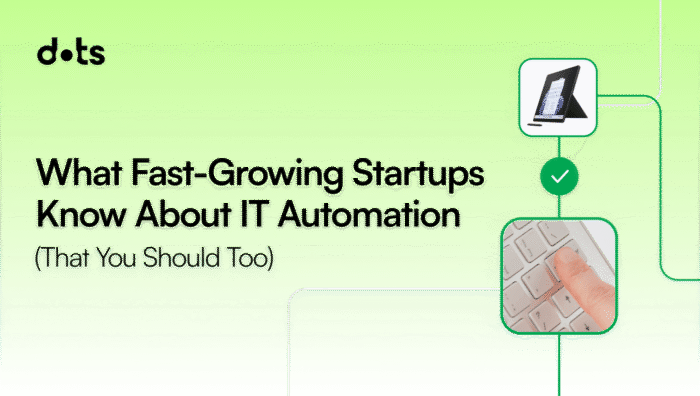AI is no longer a futuristic fantasy. Whether you realize it or not, it’s already part of your workplace. From chatbots and scheduling assistants to predictive tools in HR and finance, AI is showing up everywhere. But here’s the catch: most businesses don’t have a clear internal policy to manage how it’s used. That’s a problem. And for IT leaders, it’s a ticking time bomb.
A firm AI policy is no longer optional. Instead, it’s your IT team’s first line of defense against legal headaches, data mishandling, and total tech chaos.
What Happens Without an AI Policy
When companies roll out AI without a policy, it’s like giving the keys to a self-driving car and not telling anyone where it’s headed. Sounds risky, right? That’s because it is.
It Starts Small, Then Snowballs
At first, it might just be a tool a team picked up to “speed things up.” But before you know it:
- Privacy rules are violated.
- Sensitive employee or customer information gets mishandled.
- No one can explain how certain decisions were made.
This isn’t hypothetical. A 2024 report by IBM found that 42% of enterprise-scale companies surveyed (> 1,000 employees) report actively deploying AI in their business. An additional 40% are exploring AI but have not deployed their models because of barriers like limited AI expertise, data complexity, and ethical concerns.
That’s a huge disconnect and a huge liability.
Real Consequences Are Already Here
Many companies are diving into AI without considering the risks, and it’s starting to show. A survey by McKinsey revealed that 47% of organizations experienced at least one negative consequence from AI use, including inaccuracies, cybersecurity challenges, or intellectual property infringements.
It will only worsen for businesses that don’t have clear policies. Without some structure around how AI is used, monitored, and secured, it’s easy for things to slip through the cracks. When things go wrong, who’s called in first? IT.
Why This Responsibility Falls on IT
IT manages hardware and the company’s entire nervous system. Everything digital, including AI, flows through IT from rolling out new tools to decommissioning old laptops.
Every AI Decision Touches IT
When a team starts using an AI-driven hiring tool or installs productivity-enhancing plugins, that involves:
- Network access.
- Device compatibility.
- Data usage and storage.
- Cybersecurity protocols.
And guess who’s responsible for all of that? Right—IT.
From Device Rollout to Data Wipe
Let’s say someone leaves the company. Did their AI tools get turned off? Were any personal or sensitive datasets deleted? Did you ensure their device didn’t “learn” anything it wasn’t supposed to?
This is why AI policy needs to be baked into your IT infrastructure management strategy from day one. From rollout to retrieval and recycling, AI tools must be tracked, monitored, and turned off like any hardware.
What a Solid Internal AI Policy Looks Like
It’s not just about writing down “Don’t misuse AI.” An actual, working AI policy needs structure. Consider it in three parts: compliance, privacy, and day-to-day clarity.
Keep Regulators Off Your Back
AI tools can easily cross the line if you deal with GDPR, HIPAA, or CCPA. Your policy should:
- Define which tools are approved for use.
- Ensure transparency around decision-making.
- Require regular audits and accountability reports.
Executives’ lack of policy is why they hesitate to adopt AI, and boards are leaning on IT to lead the charge.
Protect People’s Data Like It’s Your Own
This one’s non-negotiable. AI loves data, but not all data should be accessible.
Include things like:
- What kind of data can AI collect or process.
- Which roles can access specific tools.
- Whether data is anonymized or encrypted.
Responsible AI means setting clear limits on what models can access and when—no more gray areas, according to a report by PwC.
Stop the Chaos Before It Starts
Simple clarity is one of the most overlooked parts of a good AI policy. You need:
- A list of all approved AI tools
- Names of who “owns” each tool internally
- Documentation on what each tool does and how it’s evaluated
This stops the “Wait, who installed that?” moment before it happens.
How to Build Policy Into the Tools You Already Use
Here’s the good news: managing this doesn’t have to be complicated, especially if your IT tools are already working together.
Let Automation Do the Heavy Lifting
If you’re using IT automation software, it can help enforce AI policies automatically. That includes:
- Blocking unauthorized software installs.
- Triggering alerts when specific tools are used.
- Automating data wipes during offboarding.
Track Tools Like Assets
Like you’d track who has what laptop and start tracking who’s using what AI software, IT asset management platforms can help you do this.
Want to go further? Use tools that integrate with your HR and finance systems. That way, when someone is onboarded, the right tools are provisioned — and when they leave, everything gets shut down and recycled, all through one platform.
AI Policy Doesn’t Have to Be a Minefield
The reality is that AI tools will only grow in power and number. If your team doesn’t set the rules now, someone else will. Or worse — no one will. And then you’ll be left picking up the pieces.
But here’s the good news: You can still get ahead of this. By embedding policy into the platforms you already use and letting automation help enforce it, you can keep your systems secure, your data protected, and your team out of trouble.
IT already manages the devices, data, and delivery; now, it’s time to organize the AI.
Want to take control before things spiral? We’ll set you up for free: See how Dots makes IT logistics smooth – from click to done.





